NAVYPEDIA
 Support the project with paypal
Support the project with paypal
Photo

Sprat 1957
Ships
| Names | Builders | Completed | Losses | Transfers | Discarding |
|---|---|---|---|---|---|
X51 Stickleback X52 Shrimp X53 Sprat X54 Minnow |
Armstrong-Vickers, Barrow: X51 - 54 |
1955: X51 - 54 |
none |
Sweden, 7.1958: X51 Stickleback (Spiggen) |
1965: X52 Shrimp 1966: X53 Sprat, X54 Minnow |
Technical data
| Displacement standard, t | 32 |
|---|---|
| Displacement normal, t | 35 / 39 |
| Length, m | 15.4 pp 16.4 oa |
| Breadth, m | 1.80 |
| Draught, m | 2.30 |
| No of shafts | 1 |
| Machinery | Perkins P6 diesel / electric motor |
| Power, h. p. | 50 / 44 |
| Max speed, kts | 6.5 / 6 |
| Fuel, t | diesel oil 1.2 |
| Endurance, nm(kts) | |
| Armament | 2 detachable 2t side-charges |
| Electronic equipment | type 151 sonar |
| Complement | 5 |
| Diving depth operational, m | 90 |
Graphics
Project history
It had previously been assumed that these craft were ordered merely as replacements for worn-out XE-craft, but research into declassified papers in 1994 showed a much more complex history. In 1954 the Royal Navy conceived the idea that a nuclear sea mine could be laid by 'sneak' craft in the approaches to Soviet naval bases such as Kronstadt. At first it was assumed that the payload would be the centre section of the RAFs Mk 1 'Blue Danube' 10,000lb 20kt bomb, but the following year the physics package of a modified 'Red Beard' 2000lb bomb was substituted.
Under the revised Staff Requirement the so-called 'Cudgel' sea mine was to be earned by one of the X51 class (given names in December 1954), and laid at depths down to 90m. Cudgel's timer allowed settings at half-hour intervals from 30 minutes to 12 hours after laying, or at 12-hour intervals from 12 hours to seven days after laying.
The project proved unaffordable because of the shortage of fissile material, and 'Cudgel' was cancelled sometime between late 1955 and mid-1956.
Modernizations
None.
Naval service
Stickleback was sold to the Royal Swedish Navy in 1958 and renamed Spiggen, and Sprat was lent to the US Navy at about the same time, to test harbour defences. Although stricken in 1970 the Spiggen was returned to the UK in 1977 for preservation at the Submarine Museum in Gosport.
 HOME
HOME FIGHTING SHIPS OF THE WORLD
FIGHTING SHIPS OF THE WORLD UNITED KINGDOM
UNITED KINGDOM SUBMARINES
SUBMARINES STICKLEBACK midget submarines (4, 1955)
STICKLEBACK midget submarines (4, 1955)
